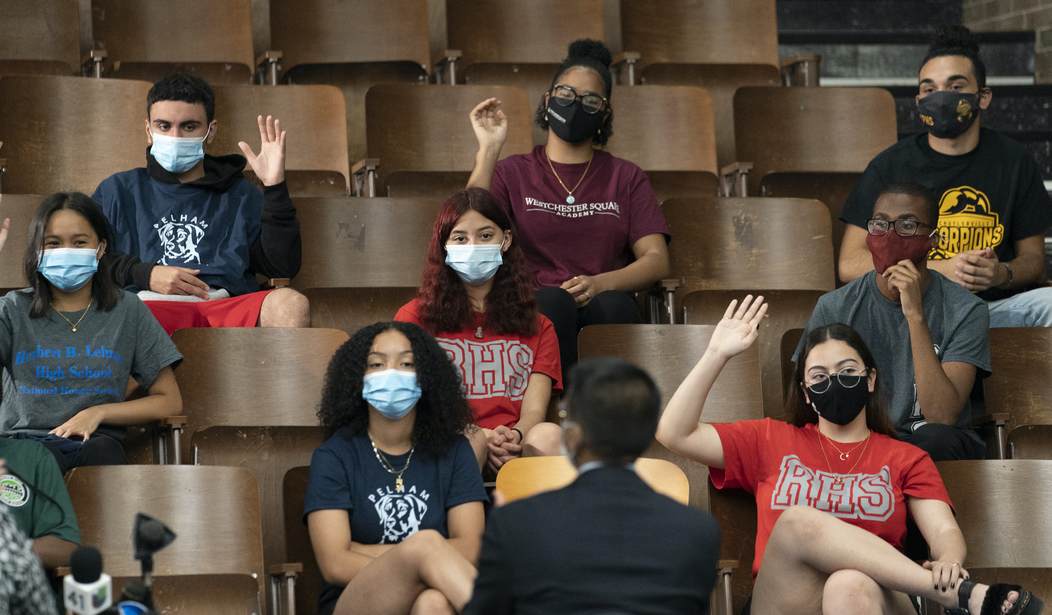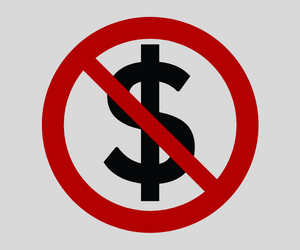For people who claim to value science, the left-wing proponents of school mask mandates sure seem intent on ignoring the data revealing that requiring students to wear face coverings in class does not do much to stop the spread of COVID-19 amongst children. Indeed, most on the left continue to tout the benefits of masks, even though the science does not support their claims. But not all on the left are willing to downplay the actual science of the matter.
In a piece written for New York Magazine, which is not exactly a bastion of right-wing thought, author David Zweig asserts that the supposed science supporting the imposition of mask mandates isn’t as solid as the left would have us believe. For starters, he brought up a large-scale study conducted by the Centers for Disease Control and Prevention (CDC) which analyzed the spread of COVID-19 in schools.
Zweig writes:
A few major news outlets covered its release by briefly reiterating the study’s summary: that masking then-unvaccinated teachers and improving ventilation with more fresh air were associated with a lower incidence of the virus in schools.
However, the summary left out an important factor:
Distancing, hybrid models, classroom barriers, HEPA filters, and, most notably, requiring student masking were each found to not have a statistically significant benefit. In other words, these measures could not be said to be effective.
The author points to similar results found in European nations such as Ireland, the United Kingdom, France, Italy, and others. Each of these nations has not required children to wear face masks. The article notes that “there’s no evidence of more outbreaks in schools in those countries relative to schools in the U.S.”
Even more interesting is the fact that the World Health Organization (WHO) has provided guidance regarding mask-wearing that conflicts with the CDC’s recommendations and has found that forcing students to wear masks may actually have a detrimental effect on their development.
The author spoke with multiple scientists and medical professionals to obtain more insight on the efficacy of school mask mandates and asked why the summary would exclude the data casting doubt on their assertion that masks prevent the spread of the virus. They indicated that the exclusion of the data was part of a practice colloquially referred to as “file drawering,” which occurs when researchers bury information that does not “produce statistically significant results.”
Vinay Prasad, an associate professor at the University of California, San Francisco’s Department of Epidemiology and Biostatistics explained to Zweig that the failure of the study to demonstrate the effectiveness of masks “is a finding of consequence and great interest.” He argued that this information “should have been included in the summary.”
The author asked a slew of experts and medical professionals to provide evidence showing mask-wearing as a valid measure to slow the spread of the coronavirus. He wrote:
Over the course of several weeks, I also corresponded with many experts — epidemiologists, infectious-disease specialists, an immunologist, pediatricians, and a physician publicly active in matters relating to COVID — asking for the best evidence they were aware of that mask requirements on students were effective. Nobody was able to find a data set as robust as the Georgia results — that is, a large cohort study directly looking at the effects of a mask requirement.
The issue with the data these individuals provided Zweig is that each of them only measured the spread of the virus among children who were wearing masks in the classroom. None of them included a control group analyzing the spread among children who were not wearing masks. Therefore, there was no way these particular studies could definitively show how the virus spread among both groups so that the data could be compared to one another.
Lloyd Fisher, the president of the Massachusetts chapter of the American Academy of Pediatrics noted that it is “important for children to see facial expressions of their peers and the adults around them in order to learn social cues and understand how to read emotions.”
The experts and medical professionals Zweig discusses in his article are not the only ones pushing back on the notion that face masks are beneficial for children.
Professor Neeraj Sood, professor and vice dean for research at the USC Price School of Public Policy and Professor Jay Bhattacharya, professor of medicine at Stanford University published a piece in the OC Register in which they averred that having children wear face masks in the classroom could hamper their development. They write:
The benefits of masks in preventing serious illness or death from COVID-19 among children are infinitesimally small. At the same time they are disruptive to learning and communicating in classrooms. They may be partially effective in shielding adults from COVID, but since when is it ethical to burden children for the benefit of adults?
The authors also point out that even for children who are infected, the survival rate is about 99.99 percent.
In light of this information, it is clear that it is the Democrats and the hard left who are the science deniers – at least when it comes to the subject of mask-wearing. The notion that the CDC would suppress information demonstrating that their narrative regarding masks for children lacks merit is telling. The reality is clear: The CDC and the left want your kids wearing masks whether they work or not. Why else would they hide this information?
Their decision to lie about the impact of mask-wearing brings another question: What is the point of having children wear masks when it’s been established that they do not decrease the spread of the coronavirus? There can be no doubt that the people pushing these mandates are not doing so to save lives. But what isn’t clear is who is benefitting from these useless mandates. But we will probably find out soon enough.
















Join the conversation as a VIP Member